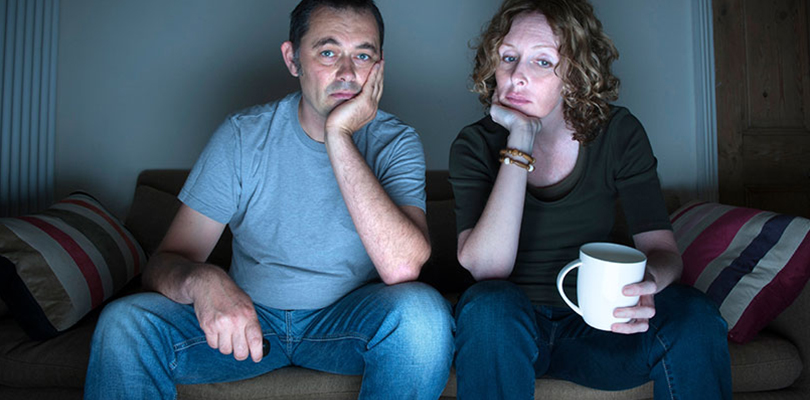Bipolar in Children – Is it Possible?
Bipolar disorder is categorized as a brain and behavior disorder that impacts a person’s mood and energy level to the point that it influences their ability to function in everyday life.
The disorder is complex in that it can include both manic and depressive episodes that can take on many different forms. Additionally, bipolar cannot be diagnosed through blood tests or brain scans, but instead must be identified based on family history, symptoms, and patterned development of the illness.
While it is not simple to determine in adults, it is even more complicated to identify bipolar in children.
Understanding the Symptoms
Symptoms of bipolar disorder are classified into two major sections: manic and depressive. The individual that suffers from the disorder will have periods of extreme highs (manic) or extreme lows (depressive) with a period of normal moods in between.
To provide more information, the following offers examples and symptoms of each classification.
Manic:
- Inability to sleep
- Thoughts of grandeur
- Euphoric thinking
- Extreme/excessive spending
- Intrusive behavior
- Inability to concentrate
- Heightened activity
- Increased irritability
Depressive:
- Decreased energy
- Loss of interest
- Suicidal ideation
- Changes in appetite
- Hopelessness
- Difficulty thinking or processing information
- Interrupted sleep pattern (too much or too little)
- Increased restlessness or irritability
How to Identify
As with anything that involves the brain, diagnosis is not always simple. People are unique, and so the way that we think and process things are also unlike anybody else. This can make it difficult to determine if someone, no matter their age, has bipolar disorder.
To understand its complexity, consider the different types of diagnosis:
What is autism? Autism, also known as autism spectrum disorder (ASD), is a developmental disability which is normally diagnosed in early childhood.
- Bipolar I disorder – Usually identified when individuals experience manic or mixed manic and depressive episodes that last longer than one week or manic episodes that require hospital care.
- Bipolar II disorder – Typically, the person, experiences depressive or hypomanic episodes but never experiences complete manic episodes.
- Bipolar disorder not otherwise specified (BP-NOS) – This is when a person may regularly experience symptoms of the disorder, but does not meet the standard diagnostic criteria.
- Cyclothymic disorder – When a person experiences hypomanic symptoms coupled with a period of mild depression that spans at least two years.
- Rapid-cycling bipolar disorder – When an individual experience at least four episodes per year of mania, hypomania, depression, or mixed episodes.
Keep in mind; each type must be accompanied with the caveat that the behavior itself must be outside the scope of the person’s usual mood or behavior.
Can Bipolar be Identified in Children?
While bipolar disorder generally presents itself in young adult life, there is controversy surrounding whether or not children can or should be diagnosed with bipolar disorder.
In fact, the Diagnostic and Statistical Manual of Mental Disorders (DSM) classifies bipolar disorder under the adult section.
The reason for this is primarily based on the fact that it is difficult to identify manic episodes in children and even if manic and depressive episodes occur, they don’t usually last long enough to meet the criteria outlined in the DSM for a proper diagnosis.
However, research indicates that although uncommon, some children meet the criteria for the adult diagnosis.
While it is accepted and understood that early diagnosis and treatment is ideal, it’s not decided at what point bipolar symptoms are present or if there are other mental health issues or behavioral concerns that may take on a similar tone.
Children who experience symptoms of bipolar disorder are sometimes given the diagnosis of BP-NOS which is then re-evaluated as the child grows up.
However, in some instances, improper diagnosis can cause lead to unnecessary medication and treatment options that simply don’t work and can even make the condition worse.
Why is Bipolar in Children Difficult to Diagnose?
Often, children who may fit on the bipolar spectrum may first be diagnosed with attention deficit disorders, separation anxiety, or depression. Research indicates that children that showcase signs of bipolar disorder usually take ten years to be correctly diagnosed.
It is incredibly difficult to diagnose bipolar in children simply because:
- Behavior issues may manifest in many ways which may be confused with manic episodes
- Mania in children is still being researched and has only recently been acknowledged
- Mental health professionals are reluctant to diagnose children because it often requires intense medication for proper treatment
The mental health community is divided in this area as they continue to research and learn more about the disorder and how it presents itself in the adolescent brain.
Of course, any mental health professional understands the importance of an early diagnosis, but a correct diagnosis is certainly as important. Experts continue to study the complexities to understand the early and proper detection in children.







